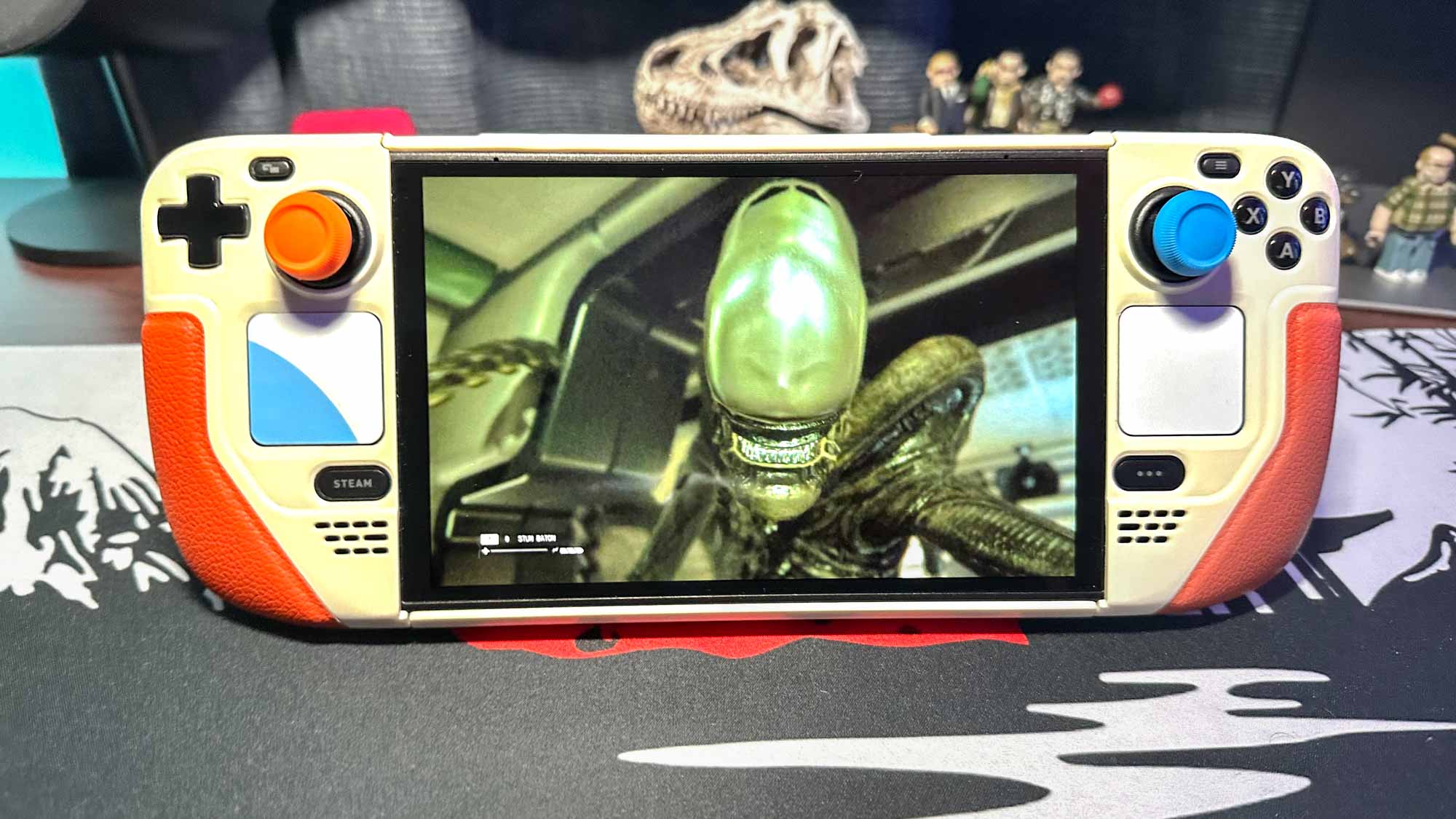
Outside of tarantulas, elevators and the on-screen antics of Jared Leto, there are few things that bother me more on this Earth than OLED burn-in. This screen defect haunts my deranged eyes even worse than dead pixels, and I’ve had at least one of the best gaming monitors ruined by this problem. So when I see stories with “burn in” and “Steam Deck OLED” start to surface, my heart obviously sinks.
Said stories have arisen because YouTuber “The Phawx” (thanks, NotebookCheck), has discovered that Valve’s updated HDR device is indeed susceptible to a form of OLED burn-in. But wait! Don’t start sobbing over your Deck OLED’s wonderful 7.4-inch display just yet. While the handheld can physically be afflicted by screen burn — especially in its 1000 nits HDR mode — it would require some seriously unreasonable usage to leave burnt in “after images” on your Steam Deck OLED.
The Phawx is not a stupid man. Quite the contrary. He’s a massive fan of handheld gaming with a comprehensive knowledge of display tech. When he creates a video about how he “burned in” his Steam Deck OLED, he absolutely knows what he’s doing. This is not real-world usage case scenarios we’re dealing with. Instead, The Phawx has gone out of his way to push the Deck OLED’s display to its breaking point to find out exactly when that breaking point will kick in.
Steam Deck OLED’s screen can start to show signs of irreversible image retention if you abuse it for over a literal month"
With Valve’s refreshed OLED, it turns out that shattering point appears to be around the 750 hour mark. For context, that’s just north of 31 days. That’s right, Steam Deck OLED’s screen can start to show signs of irreversible image retention if you abuse it for over a literal month.
And “abuse” is very much what The Phawx has done to Valve’s portable PC. This dude has essentially bricked his own handheld all in the name of, ahem, “science”. I’m sure a certain megalomaniacal “Genetic Lifeform and Disk Operating System” would throw a party over The Phaw’s video… and cake would most definitely be involved.
Once again, this handheld enthusiast is no fool; he knows exactly what he’s doing. “The application I’ve made to stress test the panel is a worst case scenario,” says the Youtuber. “I’m pushing full brightness. I’m doing HDR at full brightness… however, my application was designed to damage the screen as much as possible, and I did a good job! I damaged my screen!”
In other words, you definitely shouldn’t be overly sweating the chances of your own Steam Deck OLED being blighted by burn-in, provided you’re using it sensibly.
Feel the burn

To inflict the potentially irreparable damage that occurs with his handheld, The Phawx deliberately runs an app that places the words “HDR1000”, “HDRGREEN”, “HDRBLUE” and “HDRRED” permanently across the screen for hundreds of actual hours. Note, the one thing that courts OLED burn-in more than anything else is having a static on-screen element displayed for multiple hours. I don’t like having HUDs on the best PS5 games displayed on my LG G3 OLED for more than two straight hours, although granted, that’s me being overly cautious.
During his various, ludicrously lengthy tests, it’s no surprise that using Steam Deck OLED at peak HDR brightness of 1000 nits causes the most issues. Dialling down brightness or playing games in SDR — a feat that’s reasonably simple, seeing as Steam Deck OLED’s HDR is controlled via a slider — will help reduce irreversible image retention.
Even with 750 hours of worse case screen scenario going on, The Phawx suggests what we’re seeing in his video is a particularly bad case of image retention. Something that is theoretically fixable if you dip into the handheld’s Linux-powered Desktop mode, launch YouTube via a web browser, and play a fullscreen video that’s specifically designed to eliminate image retention/potential OLED burn-in.
Again, don’t panic. Let The Phawx ease your screen concerns with some sage advice. “Be mindful of the type of content you’re playing,” he says. “Don’t worry about image retention issues all that much. However, if you’re playing just one game and that one game has static HUD elements that are constantly there, I would suggest not going at maximum brightness all the time. I would suggest you limit the amount of brightness that you have on the panel as one mitigation technique if you’re going to be putting hundreds and hundreds of hours into the same game that has constant sitting HUD elements that might cause a problem over time that you’re playing.”
Don’t play Hades or any of the best Steam games on your Deck OLED for 750 hours straight"
In essence, don’t play Hades or any of the best Steam games on your Deck OLED for 750 hours straight. Sure, you’ll get into the Guinness Book of Records, but you’ll potentially be inflicting a severe, potentially unfixable screen defect on your favorite handheld PC.
Oh, and for context, the Nintendo Switch OLED can endure similarly punishing tests for a gobsmacking 3,600 hours before burn-in becomes an issue. Go Mario and his Mushroom Kingdom chums!







